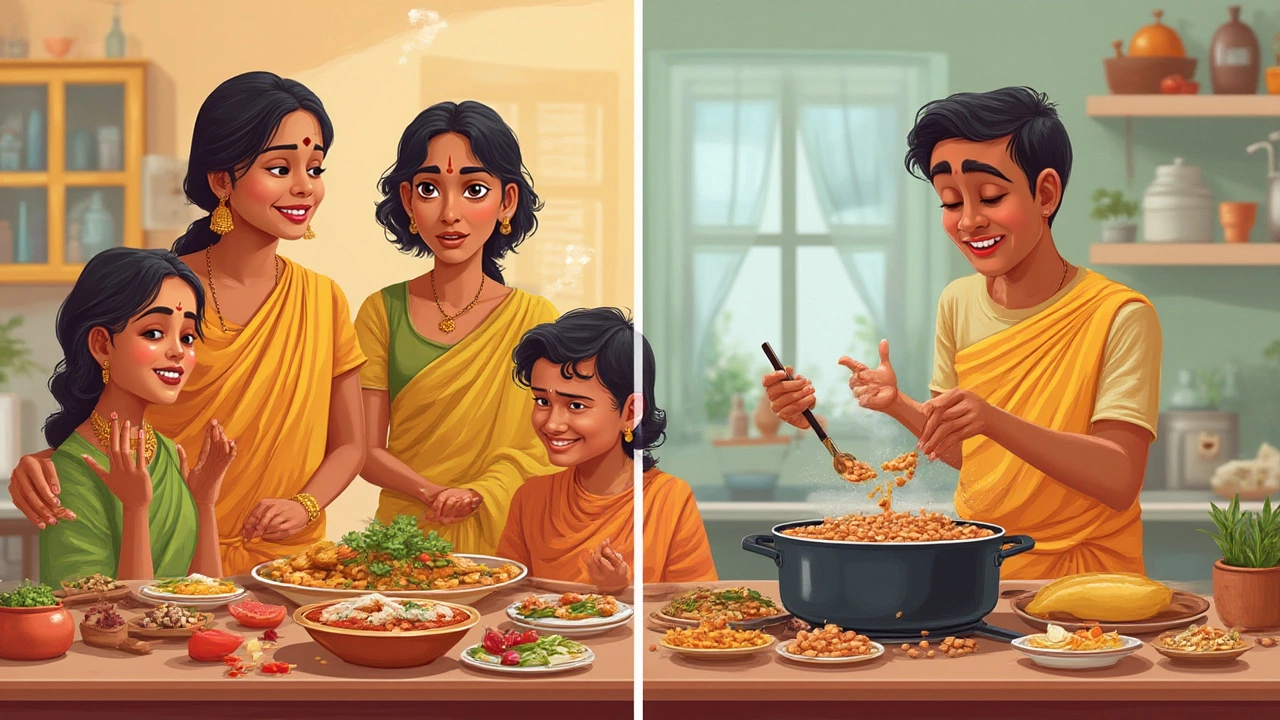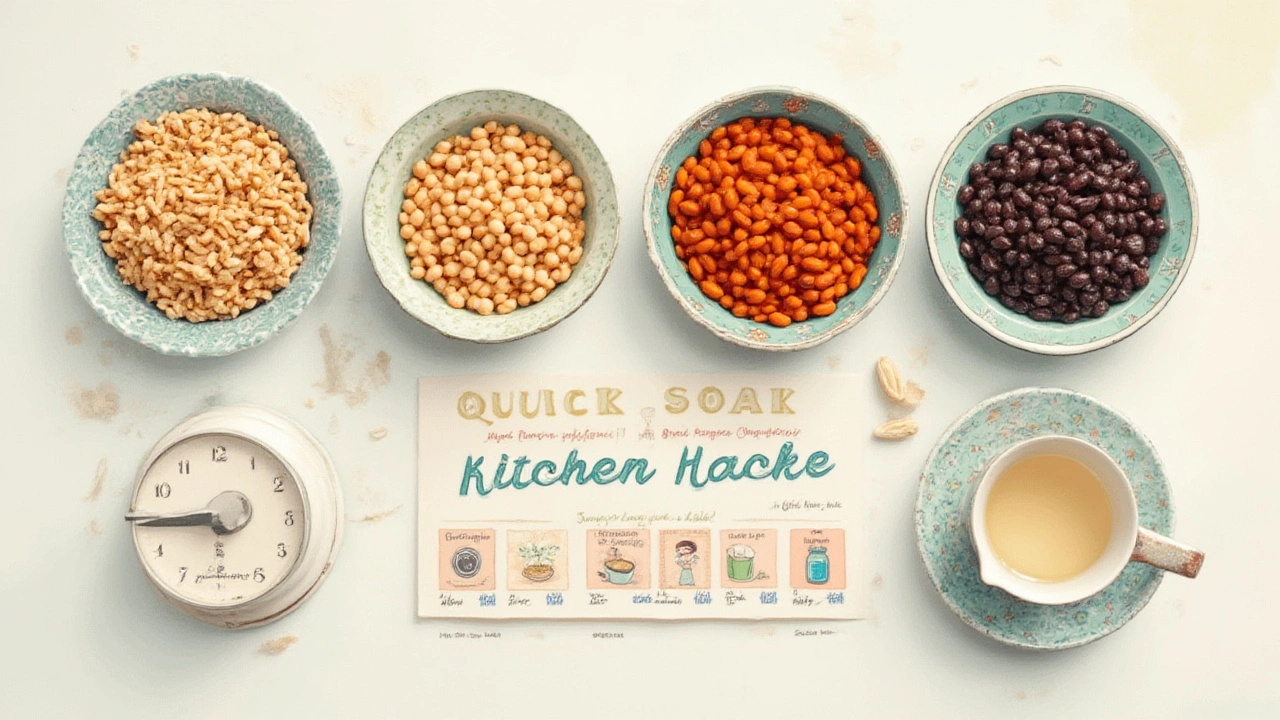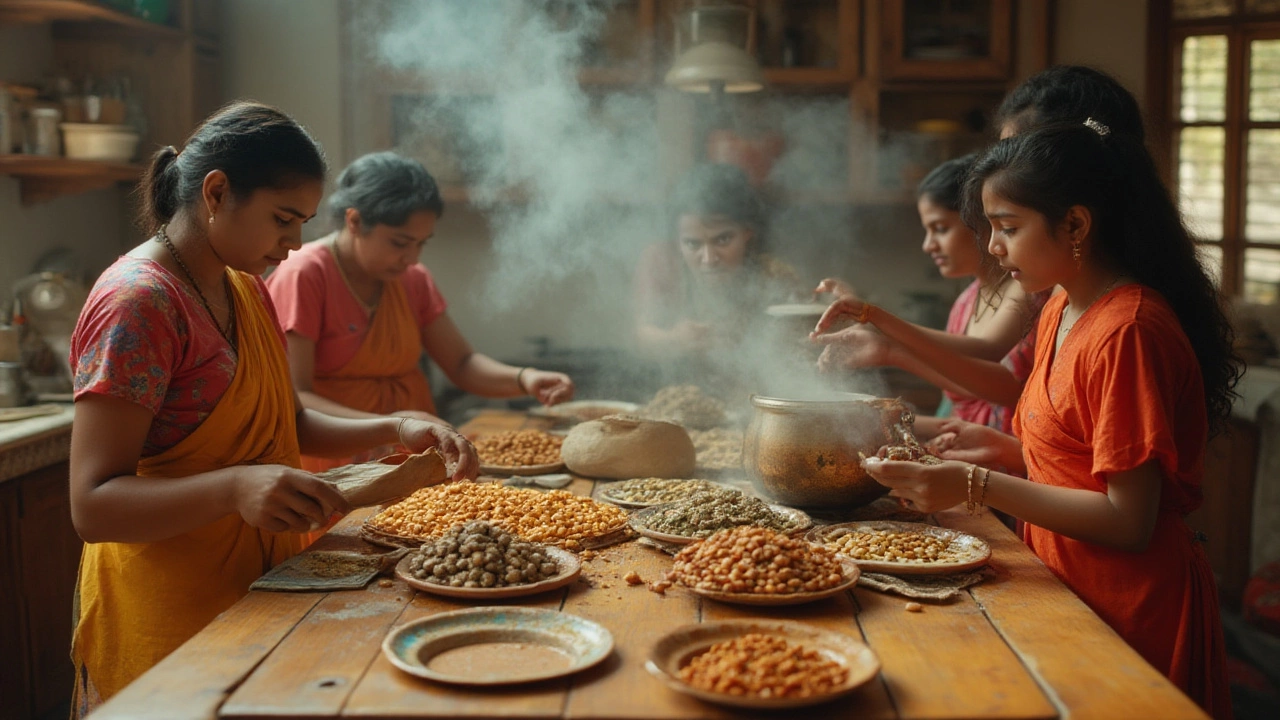Most of us have rushed dinner plans and skipped soaking beans or lentils before. It’s not just forgetfulness—it’s common. But there's way more going on beneath the surface of your dal or chickpea curry than soaked-or-not debates. Here's where reality bites: skipping the soak isn't just about saving time. There are real reasons your grandma insisted on bowlfuls of water and hours of waiting. The science, health, and texture of your favorite dishes change when you don’t give pulses their water bath.
Why Do We Soak Pulses in the First Place?
Pulses—think lentils, chickpeas, kidney beans—aren’t like quick-cooking rice or pasta. They’re hard, dense little things full of protein, fiber, and complex carbs. Their shells keep them fresh and last for ages, but these shells also guard all sorts of stuff you want to neutralize before eating. Soaking is a kitchen tradition rooted in basic chemistry and good sense. Not only does water soften the outer layer for easier cooking, but it also starts to break down some resilient compounds inside.
The main reason you soak pulses is to cut down cooking time. Without soaking, kidney beans might take three hours to soften—so not what you want after a long workday. Add to that, soaking helps leach out oligosaccharides, the little sugars in beans responsible for the unfortunate side effects (think gas and bloating). You’re literally pouring out the substances that make many people swear off beans altogether.
There’s a safety angle too. Red kidney beans can pack a heap of phytohemagglutinin, a plant lectin that’s toxic in high amounts. Soaking and then boiling properly slashes this risk. So, while your taste buds might cry out for chana masala now, your tummy (and maybe bathroom schedule) will thank you for patience.
There's data backing this up. According to the Pulse Canada nutrition study, soaking chickpeas overnight reduces cooking time by over 50%, drops antinutrient content by almost 30%, and lessens the likelihood of digestive woes. It's a prep step with real pay-off.
What Happens When You Don’t Soak Pulses?
Okay, so what if you skip it? Lots of things change in your pot—and on your plate. First up is texture. Pulses that haven’t been soaked are stubbornly tough. Sure, you can ramp up the heat and extend the cooking time, but you risk beans splitting, skins peeling off, or the outer layers going mushy before the center cooks through. Imagine making dal and getting uneven, chalky bites mixed with mush.
Your gut will probably notice, too. Unsoaked pulses are notorious for upping the ante on gas and bloating. Those same oligosaccharides that soaking can remove? They're still packed in there, and as your friendly gut microbes chew them up, you might get an orchestra of stomach rumbles.
There's also an issue with flavor. Soaked pulses not only rehydrate but start to activate natural enzymes, which break down some complex compounds and mellow out earthy, raw flavors. Without soaking, the beans taste a bit more "raw," and any flavor you add struggles to make its way into their dense interiors.
People with sensitive stomachs or anyone prone to kidney stones should definitely take notice—pulse skins are loaded with oxalates and phytates, and soaking helps reduce these. Studies from the Indian Journal of Medical Research highlight that soaking and then discarding the water removes up to 60% of these anti-nutrients. Go straight from bag to boiling pot, and you're not just making cooking tougher; you're making eating tougher, too.
Oh—and food safety again: beans like red kidney or broad beans can keep toxic levels if not pre-soaked and properly cooked. Rare, but it happens.
Here’s a quick view for the skeptics:
| Pulse Type | Cooking Time With Soak (min) | Cooking Time Without Soak (min) | Digestive Discomfort |
|---|---|---|---|
| Chickpeas | 50 | 120 | High (if unsoaked) |
| Kidney Beans | 40 | 100 | Very High (if unsoaked) |
| Lentils (Red) | 20 | 30 | Moderate |

Are There Any Pulses You Can Cook Without Soaking?
Now, it's not all doom and gloom. Lentils, especially the tiny split red ones, are famously lenient. They don’t need hours in water and soften up just fine—the Mediterranean trick is to toss them straight in a pot for quick soups or dahls. Moong dal and split peas are also forgiving, though soaking helps even these become silkier and easier on the tummy.
When you move to bigger, tougher beans—like chickpeas, kidney beans, or black-eyed peas—it’s a different game. These pulses are dense and loaded with more fibers and lectins. The larger the bean, the grumpier it gets about skipping its soak.
The exception, if you’re troubleshooting dinner, is using a pressure cooker. Instant Pots and stovetop pressure cookers can speed things up and make even unsoaked beans edible. But you’re trading time for energy and sometimes texture. Even in a pressure cooker, unsoaked pulses tend to have a grainier mouthfeel, and some can still break down unevenly. Soaking, followed by pressure cooking, is most folks’ go-to for smooth, digestible beans, especially in Indian cooking.
Some folks swear by "quick-soak" methods: boil beans for five minutes and let them sit in hot water for an hour. This half-measure isn’t quite the real deal but is decent in a pinch.
- Split red lentils: Okay to cook without soaking.
- Whole moong beans: Perform better with at least 30 minutes soak but can be cooked unsoaked in a pressure cooker.
- Kidney beans: Never skip soaking, always boil well.
- Chickpeas: Best soaked overnight, or quick-soaked if in a rush.
Health Perks and Hazards of Skipping the Soak
Here's where things get surprisingly interesting. On the plus side, some nutrients (like certain B-vitamins) might actually stick around longer if you don’t soak and toss the soaking water. But the bad outweighs the good for most people. Anti-nutrients like phytates and lectins can mess with your body’s ability to absorb iron, zinc, and calcium.
People with sensitive digestion are more likely to end up uncomfortable. Gas-bloating is obvious, but the impact goes deeper for some. For anyone with a history of kidney issues, all those extra oxalates and phytates from unsoaked pulses can be a legit risk. For parents feeding little ones, soaking is especially critical—kids are more sensitive to tummy upsets and less tolerant of those heavier indigestible sugars.
On the flip side, if you're eating beans for their low-GI benefit (stable blood sugar), soaking helps, since it makes carbohydrate breakdown gentler. The New Zealand Nutrition Foundation points out that well-soaked beans have a GI of 28–32, compared to 45–55 for unsoaked, fast-cooked pulses. That means pulses are better for your energy and blood sugar control if they've had their soak.
When it comes to food safety, it’s not just grandma’s legend: red kidney beans can actually become toxic from under-soaking and undercooking. The FDA and Food Standards Australia both list soaking and discarding the water as essential for safe red bean prep. Cases of poisoning have really happened—though rare, they're always linked to beans gone straight from bag to boil.
So yes, you can cook and eat unsoaked beans. But should you? If you’ve got time, health goals, or sensitive digestion, it’s smart to stick to soaking. If you’re an iron-stomach daredevil or eating lentils on the fly, maybe not every pulse, every time. But nutritional science says: err on the side of safety and flavour.

Soaking Solutions When You’re Short on Time
Let’s face it—the main reason people don’t soak pulses is simple: time. If you’re staring at a dry bag of beans and dinner is an hour away, full soaking feels impossible. But there are tricks to cheat the clock.
- Hot water quick soak: Boil beans for 2–5 minutes. Take off heat, cover, and let them sit for an hour. Drain, rinse, and cook as usual.
- Pressure cooker magic: Go straight from dry to cooked using high pressure, but add extra water, and double-check that beans are properly softened before serving.
- Soak and freeze: When you do find time, soak a big batch of pulses, drain well, and freeze them in portions. Then you can just cook them from frozen anytime.
- Pre-cooked canned pulses: Not ideal for all recipes due to texture, but these save time and are already fully soaked and cooked (just rinse to remove excess salt).
If you really want that ultra-smooth hummus or dal makhani, your best bet is a good overnight soak. For more tender, evenly cooked pulses, patience pays off.
Keep a routine—soak beans while doing other chores, or set a timer before bed. Use wide bowls so beans have room to expand (they’ll double or triple in size), and always drain and rinse them before cooking to get rid of that starchy, soapy soak water.
For the science nerds, yes, adding a pinch of baking soda to soaking water can soften up the toughest chickpeas, but too much alters flavor in a weird way (avoid unless you’re making falafel at home).
Here’s a quick cheat table:
| Pulse | Soak Time | Quick Soak? | Pressure Cooker? | Freezer Friendly? |
|---|---|---|---|---|
| Chickpeas | 8 hr | Yes | Yes | Yes |
| Kidney Beans | 8 hr | Yes | Yes | Yes |
| Lentils (Red) | None | No | Yes | Yes |
| Moong Dal | 30 min | Yes | Yes | Yes |
With a few kitchen hacks, you never have to fear last-minute craving for chole or rajma again.
